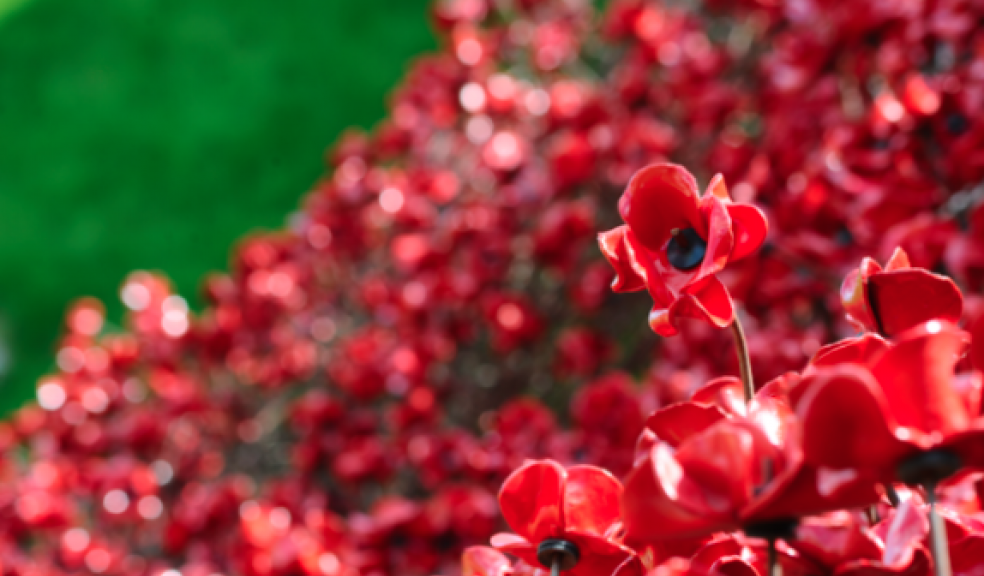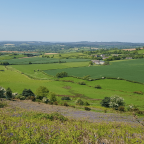
The poppies are coming home
Plymouth is to host a wave of the iconic ceramic poppies as part of a major national initiative, 14 -18 NOW, the UK’s arts programme for the First World War centenary.
The Commonwealth War Graves Commission has announced it will present Wave by artist Paul Cummins and designer Tom Piper at its Plymouth Naval Memorial.
From 15 July to 19 November next year the ceramic sculpture, which captivated so many when it was exhibited at the Tower of London, will adorn the CWGC Plymouth Naval Memorial on the Hoe.
Plymouth City Council leader Ian Bowyer said: “This is going to be stunning and I’m utterly delighted and honoured that Plymouth has been chosen to host this magnificent and moving memorial to those who made the ultimate sacrifice.
“It is fitting that this inspiring sculpture comes here. Thousands of Plymouth families have relatives who served and every year I am impressed by the number of people – of all ages – who attend Remembrance Sunday.
“For this city there is also the added fact that our Theatre Royal Plymouth played a key part in creating this incredible installation at the Tower of London. The poppies are coming home.”
The theatre manufactured and constructed the framework for the sculpture before transporting them to London, in secret. Staff from the theatre also helped create the installation made up of 888,246 ceramic poppies.
Victoria Wallace, CWGC Director General said: “In bringing Wave to a Commonwealth War Graves site, so important to the local communities in Devon, and to the Royal Navy as a whole, we honour all war dead, and combine the force of a wonderful artwork with the body that has commemorated so many men and women for nearly a century. We hope people will visit, or see the images, and remember the sacrifice they made."
Jenny Waldman, Director of 14-18 NOW, said: “The poppies have captivated millions of people across the UK, and we are delighted to present Wave at the CWGC Plymouth Naval Memorial in 2017 as part of the ongoing tour. Artist Paul Cummins and designer Tom Piper have created two enormously powerful artworks of national significance that continue to inspire all who see them.”
The CWGC Plymouth Naval Memorial was built and is maintained by the CWGC to commemorate almost 7,300 servicemen and women of the First World War who have no known grave. As well as commemorating seamen of the Royal Navy who sailed from Plymouth, the First World War panels also bear the names of sailors from Australia and South Africa.
The CWGC Plymouth Naval Memorial was designed by Sir Robert Lorimer with sculpture by Henry Poole, and was unveiled by HRH Prince George on 29 July 1924. Earlier this year it was awarded Grade I listed status. o
Wave and Weeping Window are from the installation Blood Swept Lands and Seas of Red – poppies and original concept by artist Paul Cummins and installation designed by Tom Piper – by Paul Cummins Ceramics Limited in conjunction with Historic Royal Palaces. The installation was originally at HM Tower of London from August to November 2014 where 888,246 poppies were displayed, one to honour every death in the British and Colonial forces of the First World War.
The two poppy sculptures being presented across the UK, together totaling over 10,000 poppies, have been saved for the nation by the Backstage Trust and the Clore Duffield Foundation, and gifted to 14-18 NOW and Imperial War Museums. Financial support for the presentations has been received from the Department for Culture, Media and Sport and the Heritage Lottery Fund, and fundraising for the presentations is ongoing.
The CWGC Plymouth Naval Memorial was built and is maintained by the CWGC to commemorate almost 7,300 servicemen and women of the First World War and almost 16,000 of the Second World War who have no known grave.
An admiralty committee recommended that the three manning ports in Great Britain -- Chatham, Plymouth and Portsmouth -- should each have an identical memorial of unmistakable naval form, an obelisk, which would serve as a leading mark for shipping. The memorials were designed by Sir Robert Lorimer, with sculpture by Henry Poole. The CWGC Plymouth Naval Memorial was unveiled by HRH Prince George on 29 July 1924.
In addition to commemorating seamen of the Royal Navy who sailed from Plymouth, the First World War panels also bear the names of sailors from Australia and South Africa. The governments of the other Commonwealth nations chose to commemorate their dead elsewhere, for the most part on memorials in their home ports.













